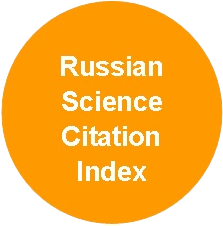Modeling Forest Fire Development Taking into Account Spot Fires
DOI:
https://doi.org/10.37482/0536-1036-2025-5-55-67Keywords:
spot fires, fire hazard monitoring, mathematical modeling, forest fire forecasting, socio-economic risks, environmental risks, convection, convective turbulenceAbstract
Forest fires annually destroy millions of hectares of forest, damaging ecosystems and affecting the state of the surface and boundary layers of the air, thereby causing significant environmental risks. Thus, the forest fires of 2023, covering an area of 28.6 mln ha, caused the death of almost 0.71 % of the forests on the Earth’s surface. In this regard, forecasting the parameters of the development of intense forest fires is an urgent task. Modern mathematical models describing the development of forest fires do not take into account the role of the convective factor. The inability to take thermal convection into account can lead to a significant distortion of the modeled parameters of the process, preventing effective protection of the population and economic facilities from fire. The aim of the study has been to discuss the possibilities of refining the equations of mathematical models of forest fire development in order to develop measures to reduce socio-economic risks for the population. The works of P.M. Matveev, N.P. Kurbatskij, S.V. Puzach, D.L. Lajkhtman and A.S. Gavrilov have been used. The methods used by the authors include literary, analytical-statistical, analytical-graphical, and mathematical modeling methods. The introduction of the turbulence parameter into the equation of the predictive model has been justified. The necessity of supplementing the 1-layer model with the equations of the 2nd layer characterizing the development of a fire in an unsteady surface layer has been shown. The statistical convergence of the calculation results of the model containing the refinement has been proven in comparison with the classical equation of the R. Rothermel model. The obtained refined model equations will make it possible to effectively calculate the parameters of spot and intense crown fires within forest ecosystems. The introduction of the turbulence coefficient into the predictive equation has made it possible to identify the largest deviations in the calculated heights of the ellipse and the expected shape of fire propagation. The refined model equation will make it possible to significantly adjust the dimensions of this segment of the ellipse based on the consideration of developing vertical convective flows that contribute to the transformation of a ground forest fire into an intense crown one. Further scientific research in this area will help develop effective measures to reduce the socio-economic risks associated with forest fires.
Downloads
References
Абаимов А.П., Прокушкин С.Г., Суховольский В.Г., Овчинникова Т.М. Оценка и прогноз послепожарного состояния лиственницы Гмелина на мерзлотных почвах Средней Сибири // Лесоведение. 2004. No 2. С. 3–11. Abaimov A.P., Prokushkin S.G., Sukhovol’skii V.G., Ovchinnikova T.M. Assessment and Forecast of Post-Fire Condition of Gmelin Larch on Permafrost Soils of Central Siberia. Lesovedenie = Russian Journal of Forest Science, 2004, no. 2, pp. 3–11. (In Russ.).
Андреева Е.С., Сергеева Г.А., Богданова И.В. Уточнение модели низового лесного пожара с учетом конвективной турбулентности // Безопасность техногенных и природных систем. 2025. Т. 9, No 1. С. 14–21. Andreeva E.S., Sergeeva G.A., Bogdanova I.V. Refinement of the Ground Forest Fire Model Taking into Account Convective Turbulence. Bezopasnost’ tekhnogennykh i prirodnykh sistem = Safety of Technogenic and Natural Systems, 2025, vol. 9, no. 1, pp. 14–21. (In Russ.). https://doi.org/10.23947/2541-9129-2025-9-1-14-21
Анойкин Р.К. Анализ математических моделей, используемых для прогнозирования низовых лесных пожаров // Технологии гражданской безопасности. 2020. Т. 17, No 2 (64). С. 58–60. Anoikin R.K. Analysis of Mathematical Models Used for Forest Ground Fires Forecasting. Tekhnologii grazhdanskoj bezopasnosti = Civil Security Technology, 2020, vol. 17, no. 2 (64), pp. 58–60. (In Russ.). https://doi.org/10.54234/CST.19968493.2020.17.2.64.10.58
Баровик Д.В., Таранчук В.Б. Алгоритмические основы построения компьютерной модели прогноза распространения лесных пожаров // Вестн. Полоцк. гос. ун-та. Сер. С: Фундаментальн. науки. Информат. 2011. No 12. С. 51–56. Barovik D.V., Taranchuk V.B. Algorithmic Fundamentals of Computer Model for Forest Fires Prediction. Vestnik Polotskogo gosudarstvennogo universiteta. Seriya C: Fundamental’nye nauki. Informatika = Vestnik of Polotsk State University. Part C. Fundamental Sciences, 2011, no. 12, pp. 51–56. (In Russ.).
Будыко М.И. Тепловой баланс земной поверхности. Л.: Гидрометеоиздат, 1956. 255 с. Budyko M.I. Heat Balance of the Earth’s Surface. Leningrad, Gidrometeoizdat Publ., 1956. 255 p. (In. Russ.).
Василенко С.В., Гаврилов А.С., Липовицкая И.Н., Мханна А. Метод климатологического анализа вертикальной структуры атмосферного пограничного слоя с использованием численной модели // Уч. зап. Рос. гос. гидрометеорол. ун-та. 2006. No 2. С. 53–64. Vasilenko S.V., Gavrilov A.S., Lipovitskaya I.N., Mkhanna A. A Method of Climatological Analysis of the Vertical Structure of the Atmospheric Boundary Layer Using a Numerical Model. Uchenye zapiski Rossijskogo gosudarstvennogo gidrometeorologicheskogo universiteta = Proceedings of the Russian State Hydrometeorological University, 2006, no. 2, pp. 53–64. (In Russ.).
Возникновение лесных пожаров: сб. ст. / под ред. Н.П. Курбатского. М.: Наука, 1964. 57 с. The Occurrence of Forest Fires: Collection of Articles. Ed. by N.P. Kurbatskij. Moscow, Nauka Publ., 1964. 57 p. (In Russ.).
Гаврилов А.С. О строении пограничного слоя атмосферы над поверхностью с произвольными свойствами шероховатости // Метеорол. и гидрол. 1973. No 12. С. 35–42. Gavrilov A.S. On the Structure of the Atmospheric Boundary Layer above the Surface with Arbitrary Roughness Properties. Meteorologiya i gidrologiya = Russian Meteorology and Hydrology, 1973, no. 12, pp. 35–42. (In Russ.).
Гаврилов А.С., Мханна А., Харченко Е.В. Верификация модели атмосферного пограничного слоя применительно к задачам прогноза загрязнения атмосферы от очагов лесных пожаров // Уч. зап. Рос. гос. гидрометеорол. ун-та. 2013. No 32. С. 119–129. Gavrilov A.S., Mhanna A., Kharchenko E.V. Verification of the Model of Atmospheric Boundary Layer Applied to the Problem Prediction of Air Pollution from Forest Fires. Uchenye zapiski Rossijskogo gosudarstvennogo gidrometeorologicheskogo universiteta = Proceedings of the Russian State Hydrometeorological University, 2013, no. 32, pp. 119–129. (In Russ.).
Гаврилов А.С., Петров Ю.С. Оценка точности определения турбулентных потоков по стандартным гидрометеорологическим измерениям над морем // Метеорол. и гидрол. 1981. No 4. С. 52–59. Gavrilov A.S., Petrov Yu.S. Assessment of the Accuracy of Turbulent Flow Determination Using Standard Hydrometeorological Measurements over the Sea. Meteorologiya i gidrologiya = Russian Meteorology and Hydrology, 1981, no. 4, pp. 52–59. (In Russ.).
Гришин А.М., Пугачева П.В. Анализ действия лесных и степных пожаров на города и поселки и новая детерминированно-вероятностная модель прогноза пожарной опасности в населенных пунктах // Вестн. Томск. гос. ун-та. Математика и механика. 2009. No 3 (7). С. 99–108. Grishin A.M., Pugacheva P.V. Analysis of Impact of Forest and Steppe Fires on Cities and Villages and the New Determinate and Probability Model for Prediction of Fire Dangerous in Villages and Cities. Vestnik Tomskogo gosudarstvennogo universiteta. Matematika i mekhanika, 2009, no. 3 (7), pp. 99–108. (In Russ.).
Карлин Л.Н., Ванкевич Р.Е., Тумановская С.М., Андреева Е.С., Ефимова Ю.В., Хаймина О.В., Клеванный К.А., Фрумин Г.Т., Еремина Т.Р., Ершова А.А. Гидрометеорологические риски. СПб.: Рос. гос. гидрометеорол. ун-т, 2008. 282 с. Karlin L.N., Vankevich R.E., Tumanovskaya S.M., Andreeva E.S., Efimova Yu.V., Khajmina O.V., Klevannyj K.A., Frumin G.T., Eremina T.R., Ershova A.A. Hydrometeorological Risks. St. Petersburg: Russian State Hydrometeorological University Publ., 2008. 282 p. (In Russ.).
Кулешов А.А., Мышецкая Е.Е. Математическое моделирование лесных пожаров с применением многопроцессорных ЭВМ // Математическое моделирование. 2009. Т. 1, No 5. С. 629–634. Kuleshov A.A., Myshetskaya E.E. Mathematical Simulation of Forest Fires Using Multiprocessor Computers. Matematicheskoe modelirovanie = Mathematical Models and Computer Simulations, 2009, vol. 1, pp. 629–634. https://doi.org/10.1134/S2070048209050093
Кулешов А.А., Мышецкая Е.Е., Якуш С.Е. Моделирование распространения лесных пожаров на основе модифицированной двумерной модели // Математическое моделирование. 2016. Т. 28, No 12. С. 20–32. Kuleshov A.A., Myshetskaya E.E., Yakush S.E. Numerical Simulation of Forest Fire Propagation Based on Modified Two-Dimensional Model. Matematicheskoe modelirovanie = Mathematical Models and Computer Simulations, 2017, vol. 9, pp. 437–447. https://doi.org/10.1134/S207004821704007X
Курбатский Н.П. Пожарная опасность в лесу и ее измерение по местным шкалам // Лесн. пожары и борьба с ними: сб. ст. / под ред. Н.П. Курбатского. М.: АН СССР, 1963. С. 5–30. Kurbatskij N.P. Fire Danger in the Forest and its Measurement on Local Scales. Lesnye pozhary i bor’ba s nimi: Collection of Articles. Ed. by N.P. Kurbatskij. Moscow, the USSR Academy of Sciences Publ., 1963, pp. 5–30. (In Russ.).
Лайхтман Д.Л., Шеметова Г.В. Нестационарный приземный слой. Резкое изменение турбулентного потока тепла // Некоторые вопросы физики атмосферы. Тр. Ленингр. Гидрометеорол. ин-та. 1974. Вып. 49. С. 12–18. Lajkhtman D.L., Shemetova G.V. Unsteady Surface Layer. Abrupt Change in Turbulent Heat Flux. Nekotorye voprosy fiziki atmosfery. Trudy Leningradskogo Gidrometeorologicheskogo instituta, 1974, iss. 49, pp. 12–18. (In Russ.).
Мартынов А.В., Греков В.В., Попова О.В. Комплект средств измерений для экспресс-анализа интумесцентной защиты огнезащиты на строительном объекте // Пожары и чрезвычайные ситуации: предотвращение, ликвидация. 2021. No 3. С. 61–68. Martynov A.V., Grekov V.V., Popova O.V. Measuring Tool Kit for Express Analysis of Intumescent Fire Protection at a Construction Facility. Pozhary i chrezvychajnye situatsii: predotvrashchenie, likvidatsiya = Fires and Emergencies: Prevention, Elimination, 2021, no. 3, pp. 61–68. (In Russ.). https://doi.org/10.25257/FE.2021.3.61-68
Матвеев П.М. Вероятность пятнистых загораний при лесных пожарах // Вопросы лесной пирологии: сб. ст. / под ред. Н.П. Курбатского. Красноярск: Ин-т леса и древесины, 1975. С. 44–65. Matveev P.M. The Probability of Spot Fires during Forest Fires. Voprosy lesnoj pirologii: Collection of Articles. Ed. by N.P. Kurbatski. Krasnoyarsk, Institute of Forest and Wood Publ., 1975, pp. 44–65. (In Russ.).
Меднов А.О., Попова Е.С. Обеспечение пожарной безопасности на основе изучения особенностей развития пожаров и учета применяемых легковоспламеняющихся жидкостей // Тр. Ростов. гос. ун-та путей сообщения. 2017. No 3. С. 82–84. Mednov A.O., Popova E.S. Ensuring Fire Safety Based on Studying the Characteristics of Fire Development and Taking into Account the Flammable Liquids Used. Trudy Rostovskogo gosudarstvennogo universiteta putej soobscheniya, 2017, no. 3, pp. 82–84. (In Russ.).
Пузач С.В., Ле Т.А., Нгуен Т.Х. Пожарная опасность пятнистого возгорания при верховом лесном пожаре для объектов энергетики // Пожары и чрезвычайные ситуации: предотвращение, ликвидация. 2018. No 2. С. 64–70. Puzach S.V., Le T.A., Nguyen T.H. Fire Hazard from Spotting Ignition at Crown Fires for Power Engineering Facilities. Pozhary i chrezvychajnye situatsii: predotvrashchenie, likvidatsiya = Fires and Emergencies: Prevention, Elimination, 2018, no. 2, pp. 64–70. (In Russ.). https://doi.org/10.25257/FE.2018.2.64-70
Софронов М.А., Волокитина А.В. Пирологическое районирование в таежной зоне. Новосибирск: Наука, 1990. 204 с. Sofronov M.A., Volokitina A.V. Pyrological Zoning in the Taiga Zone. Novosibirsk, Nauka Publ., 1990. 204 p. (In Russ.).
Abannikov V.N., Seroukhova O.S., Mkhanna A.I.N., Podgaiskii E.V. Assessing the Impact of Agrometeorological Conditions on the Yield of Grain and Leguminous Crops in European Russia. IOP conference Series: Earth and Environmental Science, 2022, vol. 1010, art. no. 012033. https://doi.org/10.1088/1755-1315/1010/1/012033
Adamyan V.L., Sergeeva G.A., Seferyan L.A., Gorlova N.Yu. Development of Technological Measures to Ensure the Safety of Production Facilities in Petrochemical Industry. IOP Conference Series: Materials Science and Engineering, 2021, vol. 1083, art. no. 012050. https://doi.org/10.1088/1757-899X/1083/1/012050
Andreeva E.S. The Possibilities of Using the Minimax Method to Diagnose the State of the Atmosphere. Journal of Atmospheric Science Research, 2023, vol. 6, iss. 2, pp. 42–49. https://doi.org/10.30564/jasr.v6i2.5519
Bogdanova I., Dymnikova O., Loskutnikova I. Analysis of the Noise Load from the Manufacturing Enterprise on the Territory of Residential Buildings Based on Complex Mathematical Model. IOP Conference Series: Materials Science and Engineering, 2020, vol. 1001, art. no. 012119. https://doi.org/10.1088/1757-899X/1001/1/012119
Denisov O., Andreeva E. An Innovative Approach to the Elimination of Combustion Foci at MSW Landfills (on the Example of the Rostov Region). E3S Web of Conferences, 2021, vol. 273, art. no. 04006. https://doi.org/10.1051/e3sconf/202127304006
Rothermel R.C. A Mathematical Model for Predicting Fire Spread in Wildland Fuels. Ogden, Utah, U.S. Department of Agriculture, Intermountain Forest and Range Experiment Station, 1972, Research Paper INT-115. 40 p.
Downloads
Published
How to Cite
Issue
Section
License
Copyright (c) 2025 Е.С. Андреева, И.В. Богданова, Г.А. Сергеева (Автор)

This work is licensed under a Creative Commons Attribution 4.0 International License.












